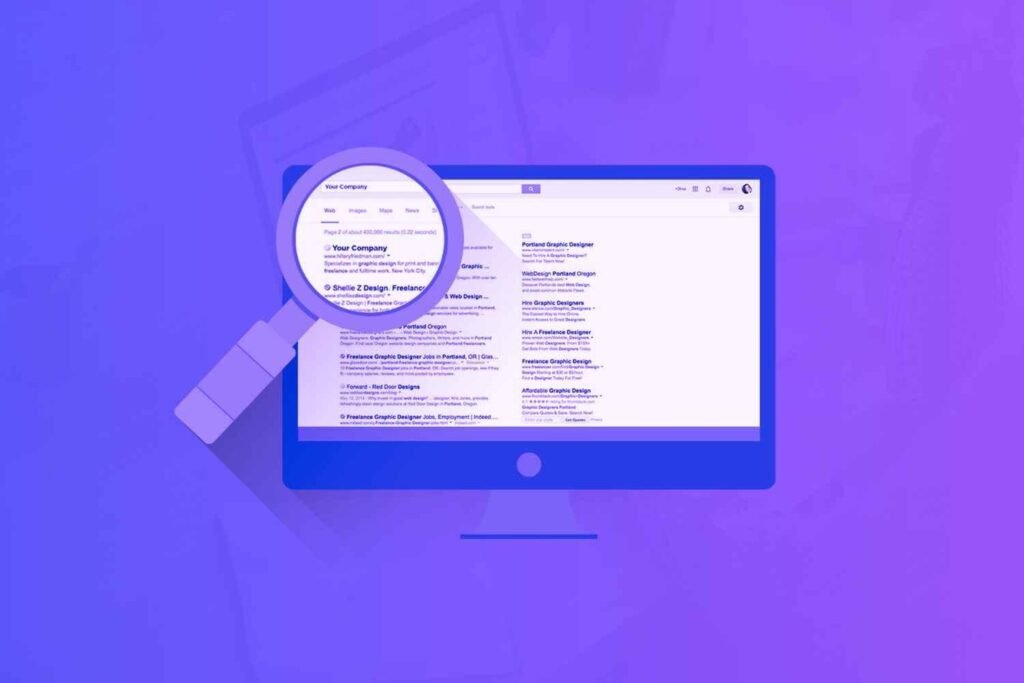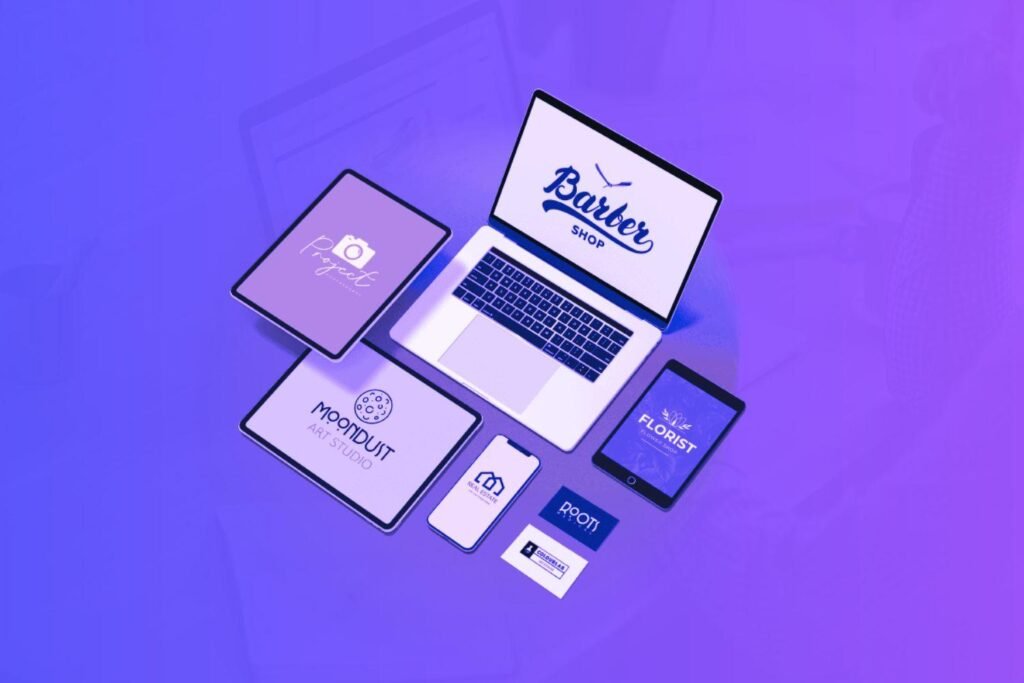Fifteen years ago, when I was a college student, I started my first blog. At that time, I had no clue how advertising worked. I assumed it was only for big websites.
But when I joined Google Adsense, embedded ads on my blog, and got my first-ever paycheck of $150, it felt like magic!
As a blogger, you possess the power to connect with your audience in a meaningful way. And if you want to use this power to generate income, one way is to let brands advertise their products and services on your blog.
But is it the right monetization strategy for you? If it is, how to go about blog advertising for the best possible results?
These are the questions I’ll try to answer in this guide, along with the best advertising platforms you can apply to.
It will help you make the right decisions to keep your readers engaged and, at the same time, turn your passion into profit. So, let’s begin.
Disclaimer: If you buy any products through links on this site, I may earn a commission. But it doesn't make any difference to your cost, and it helps me keep this blog running. So you could always read my articles for free.
What is blog advertising?
Blog advertising is a way to monetize your blog by displaying ads to your audience. Whether you’re just starting out or you’ve been blogging for years, this strategy can help you turn a profit.
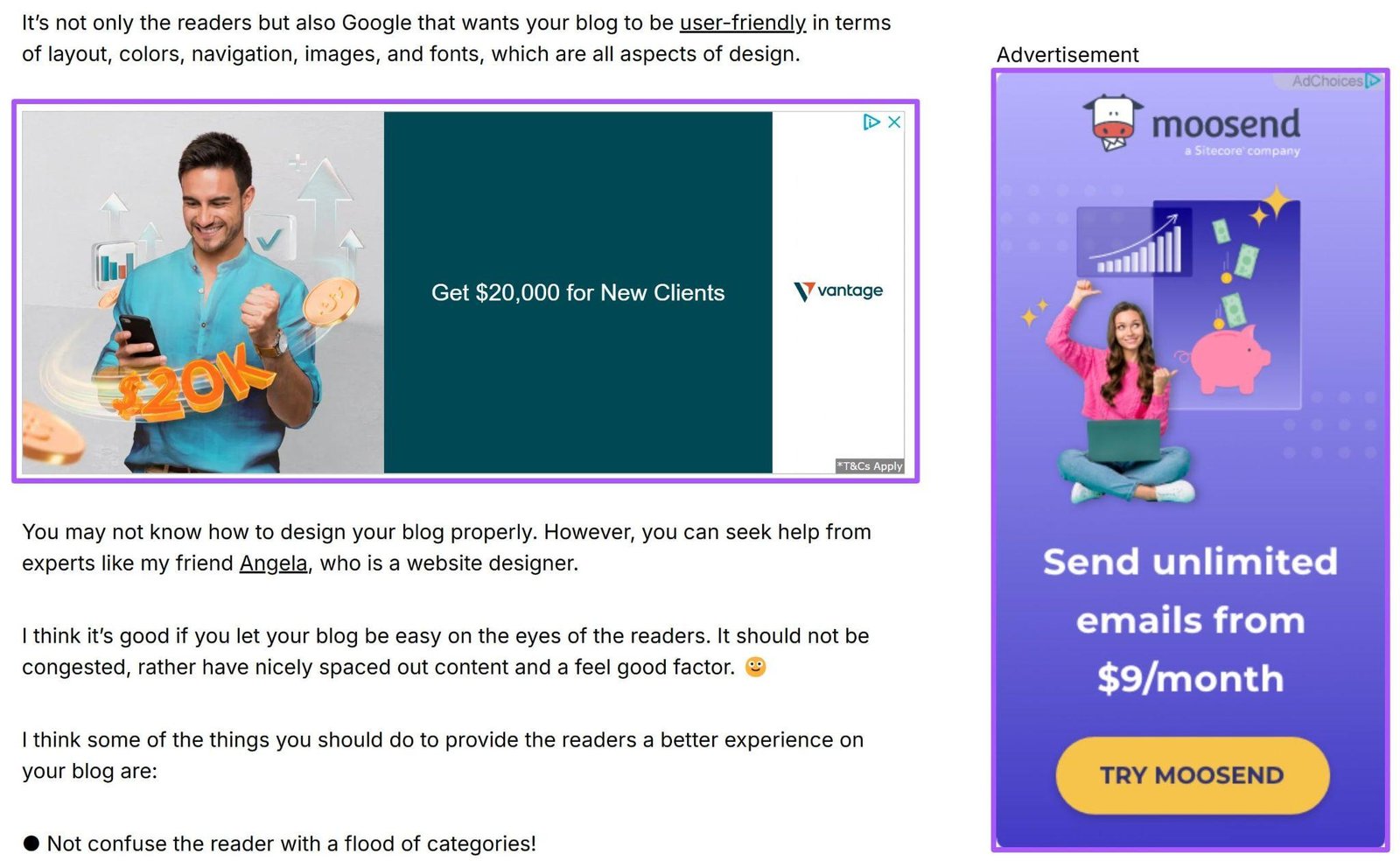
Here’s how it works: advertisers pay you to display their ads on your blog. These could be banner ads, sponsored posts, or even affiliate links.
For instance, if you write about gardening, an advertiser selling organic fertilizers might pay to feature their ad on your site.
The more traffic you have, the more potential income you can earn. In most cases, you can choose ad types that suit your audience and blend seamlessly with your content.
So, if you’re looking to monetize, I wouldn’t deny that blog advertising is a simple yet effective way to start. And it gives new bloggers a chance to get their beak wet.
Benefits of blog advertising
There are many ways to make money from your blog. Affiliate marketing. Selling ebooks. Coaching. You name it.
But blog advertising stands out from other monetization methods for its simplicity, scalability, and low-maintenance nature.
For starters, it’s a passive income stream that doesn’t demand constant attention.
Take affiliate marketing, for example. It requires you to strategically place links and actively drive sales to earn commissions.
Similarly, selling products or services often means handling customer inquiries, refunds, and marketing.
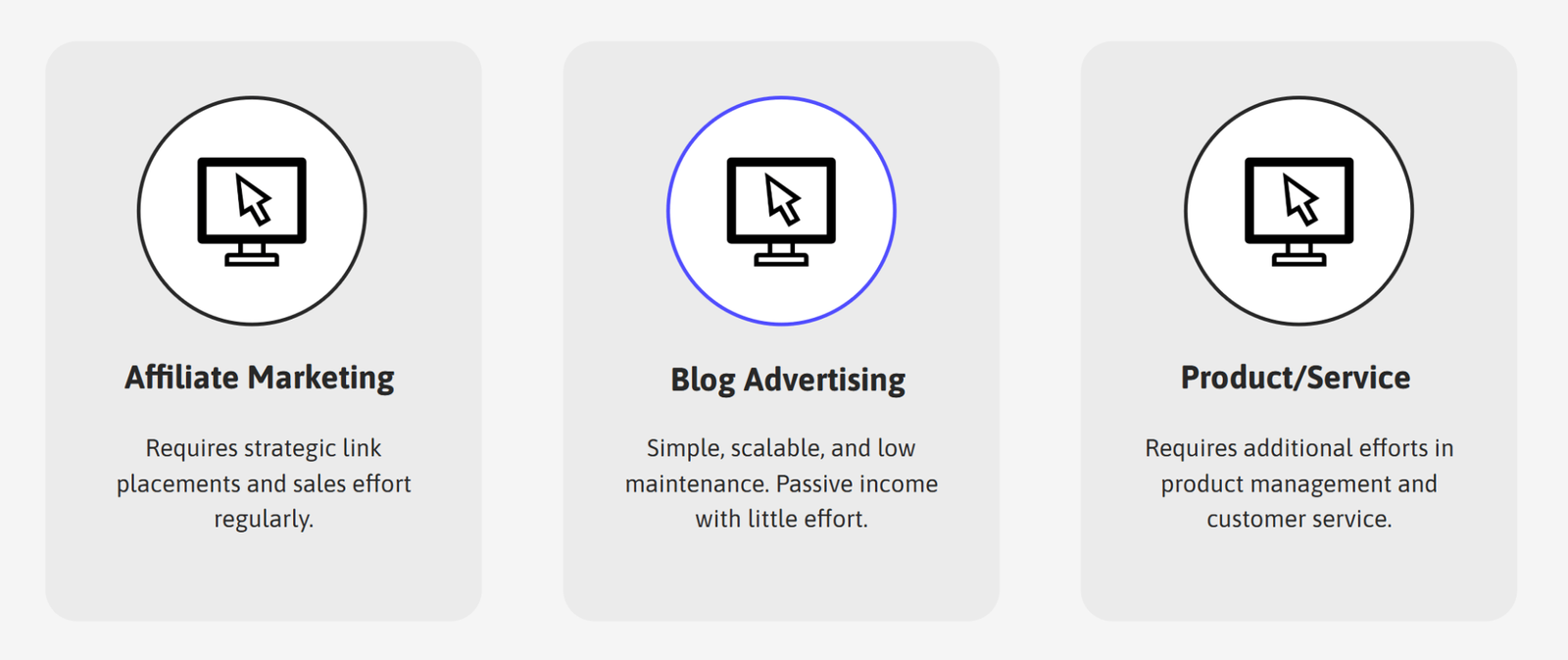
Blog advertising, on the other hand, works quietly in the background. Once you’ve set it up—whether it’s through ad networks like Google AdSense or direct partnerships—your focus can remain on creating content.
Plus, it’s quick and easy to set up. If you have a high-traffic blog, you’ll start generating revenue as soon as you place the ads. You can simply focus on creating content and driving traffic.
Disadvantages of running ads on your blog
So, is blog advertising the best way to make money for everyone? Of course not! Despite all the advantages I have mentioned so far, it may come as a surprise that I personally avoid using blog advertising. Here’s why:

There are more profitable alternatives
When I started monetizing my blog, ads seemed like the simplest option. But after some time, you may realize that the earnings don’t match the time you put in.
Ads rely on traffic volume and often pay pennies per click, whereas affiliate marketing, selling digital products, or offering services can generate higher returns with fewer visitors.
If you’re focusing solely on ads, it may take years to see substantial income. Diversifying your monetization methods is often more rewarding. While ads are easy to set up, they might not be your most profitable option in the long run.
Bad for user experience
Once you start running ads, don’t be surprised if readers start emailing you about how the ads are ruining their experience. Too many distracting popups and ads can turn off even your most dedicated audience.
Poorly placed or overly intrusive ads can frustrate visitors, causing them to leave your site altogether. This can hurt your credibility and engagement.
Bad for website performance
Adding ads to your site can significantly slow down your load times. When this happens, readers may start bouncing off your blog, and Google rankings could drop. So, a slower site not only affects user experience but can also hurt your SEO.
To combat this, you can invest in faster hosting and caching plugins, which will cost extra.
Even then, ads can still add a noticeable lag, especially on mobile devices. If you care about speed and performance, you’ll need to weigh this drawback carefully.
Top blog advertising networks
By now, you know the pros and cons of blog advertising. So, if you have decided that it’s something you’d like to experiment with, the next step is to join a blog advertising platform. Here are the best options available today.
Monumetric
Monumetric is a blog advertising platform designed to help you earn more from your site by optimizing ad placements and partnerships with premium advertisers.

If you’ve ever felt like your current ads aren’t generating enough income or they disrupt your site’s design, Monumetric could be the solution. Unlike generic ad networks, it focuses on balancing user experience with higher earnings.
To join Monumetric, your blog needs at least 10,000 monthly pageviews. This eligibility requirement ensures their service is a good fit for your traffic level, as higher pageviews maximize ad revenue potential.
Additionally, your site should feature original content and follow family-friendly guidelines, ensuring compatibility with advertisers.
If your blog meets their criteria, you can benefit from a managed service that simplifies ad placement and enhances your earning potential.
Propeller Ads
PropellerAds is a blog advertising platform that focuses on delivering performance-driven ad solutions for publishers.
If you’re looking for a simple way to monetize your blog without the strict requirements of some ad networks, PropellerAds could be a great fit.
They offer various ad formats, including push notifications, interstitials, and native ads, allowing you to choose what works best for your audience and blog design.
One of the biggest advantages of PropellerAds is its low barrier to entry. Unlike other platforms that require high traffic volumes, PropellerAds welcomes bloggers with any level of traffic. Whether you’re just starting out or already have a growing audience, you can apply.
When I first explored PropellerAds, I appreciated the flexibility and quick setup. There’s no need to meet high pageview thresholds or wait weeks for approval.
If you’re eager to monetize your blog immediately, this platform can help you get started.
Ezoic
Ezoic is a blog advertising platform that uses AI to optimize your ad placements, boosting your revenue while maintaining a good user experience.
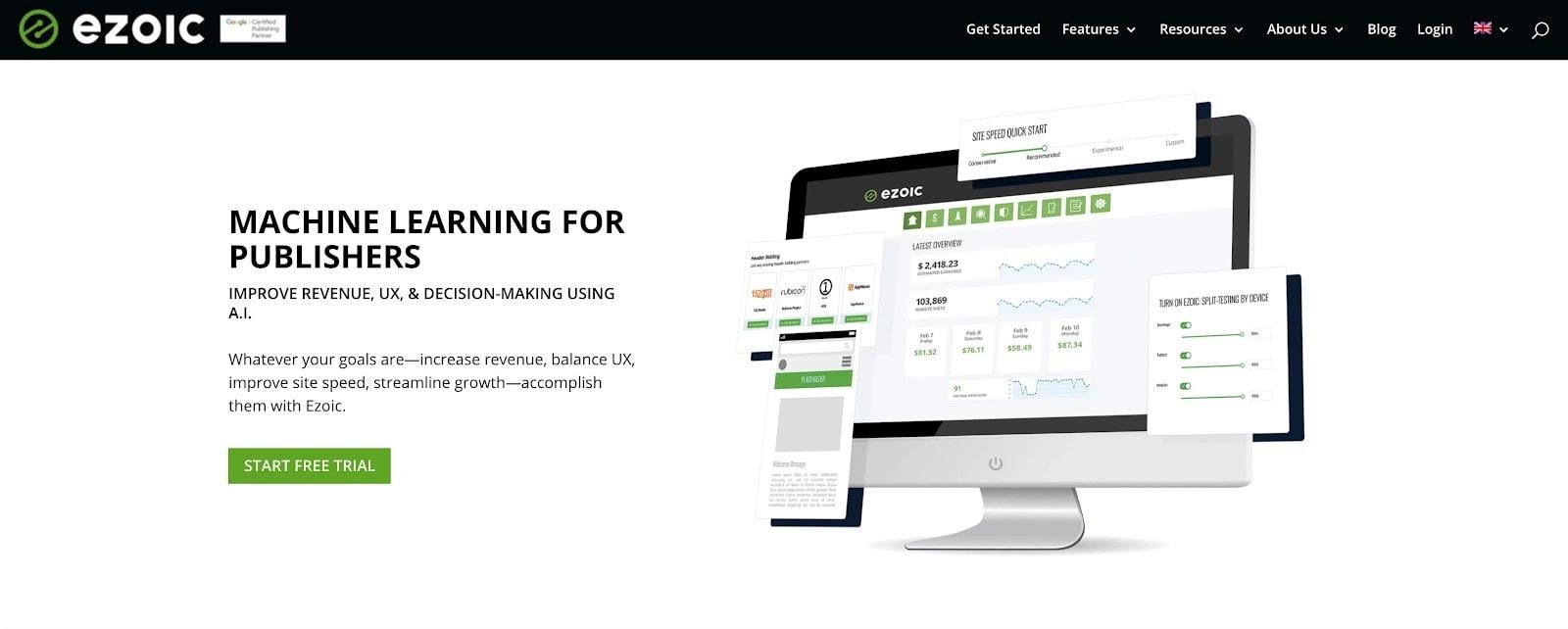
If you’ve ever felt overwhelmed trying to balance income with reader satisfaction, Ezoic can handle the heavy lifting for you.
Its tools analyze visitor behavior to find the most effective ad layouts, helping you maximize your earnings without cluttering your site.
If you want to join Ezoic, your blog must meet a few eligibility requirements. First, you need a minimum of 10,000 monthly pageviews, which ensures their tools can make a noticeable impact.
Your site should also comply with Google’s policies, meaning it must have original, family-friendly content and avoid excessive spam or low-quality material.
AdThrive
AdThrive is a premium blog advertising platform designed to maximize your earnings while maintaining an excellent user experience.
If you’ve built a strong blog and want to work with top-tier advertisers, AdThrive could be a perfect match. It manages every aspect of ad placement and optimization, allowing you to focus on creating content while earning reliably from your traffic.
To qualify for AdThrive, your blog needs at least 100,000 monthly pageviews, with the majority of your audience located in the U.S.
This high traffic threshold ensures their premium advertisers get significant exposure, translating to higher revenue for you. Your site must also feature original, family-friendly content and adhere to Google’s ad policies.
If your blog meets the criteria, AdThrive offers an excellent way to turn your traffic into substantial income.
Mediavine
Mediavine is a full-service blog advertising platform that helps you maximize your ad revenue while ensuring a smooth user experience.
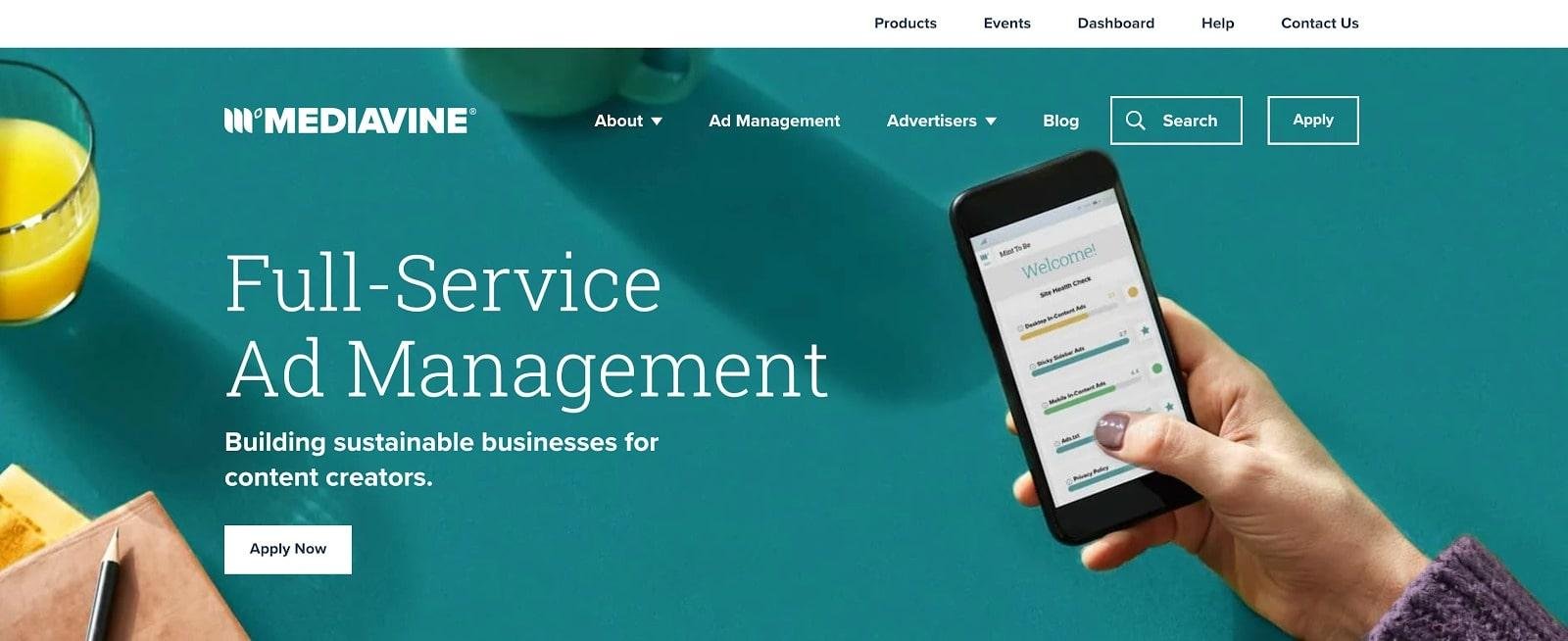
Known for its premium ad network partnerships, Mediavine is ideal if you’re serious about monetizing your blog without compromising quality. They handle everything from ad placement to optimization, letting you focus on creating content.
In order to qualify for Mediavine, your blog needs at least 50,000 monthly sessions, as verified by Google Analytics.
This ensures your site has enough traffic to benefit from their premium advertising services. Your blog should also feature long-form, original content and adhere to Google’s ad policies, including maintaining a clean, family-friendly environment.
Google Adsense
Google AdSense is one of the most popular blog advertising platforms, offering a simple way to monetize your site with minimal effort.
If you’re new to blog advertising, AdSense is a great starting point because it’s user-friendly and integrates seamlessly with most blogs.
Once approved, you can display ads that align with your content and earn revenue through clicks and impressions.
To be able to join Google AdSense, your blog must meet a few requirements. Your content needs to be original and valuable, appealing to a specific audience.
Google also requires your site to comply with its policies, meaning it must be family-friendly, free of excessive pop-ups, and easy to navigate.
When I first applied for AdSense, it only took a few tweaks—like improving my site structure—to get approved. If you’re looking for an accessible way to start earning from your blog, AdSense is a reliable option.
Infolinks
Infolinks is a blog advertising platform that focuses on delivering non-intrusive, contextual ads. If you’re looking for a way to monetize your blog without cluttering it with banners or pop-ups, Infolinks is a great option.

Their ad formats, like in-text links and in-fold ads, blend seamlessly with your content, ensuring a better experience for your readers while generating revenue.
One of the best things about Infolinks is its accessibility. Unlike many ad networks, there’s no strict traffic requirement, so you can start earning even if your blog is small.
However, your site needs to feature original, quality content and have a clean design to be approved.
Media.net
Media.net is a blog advertising platform offering high-quality contextual ads to help you monetize your site.
If you’re looking for an alternative to Google AdSense, Media.net is an excellent choice, known for its premium advertiser network and easy integration.
The platform focuses on showing ads that are directly relevant to your content, increasing the chances of clicks and better engagement from your audience.
To qualify for Media.net, your blog must feature original, high-quality content and maintain a professional, family-friendly environment.
While there’s no fixed traffic requirement, having a steady stream of visitors increases your chances of approval and higher earnings. Media.net also favors blogs with English-speaking audiences, particularly in regions like the U.S. and Canada.
RevenueHits
RevenueHits is a performance-based blog advertising platform that helps you monetize your site through various ad formats like pop-ups, banners, and native ads.
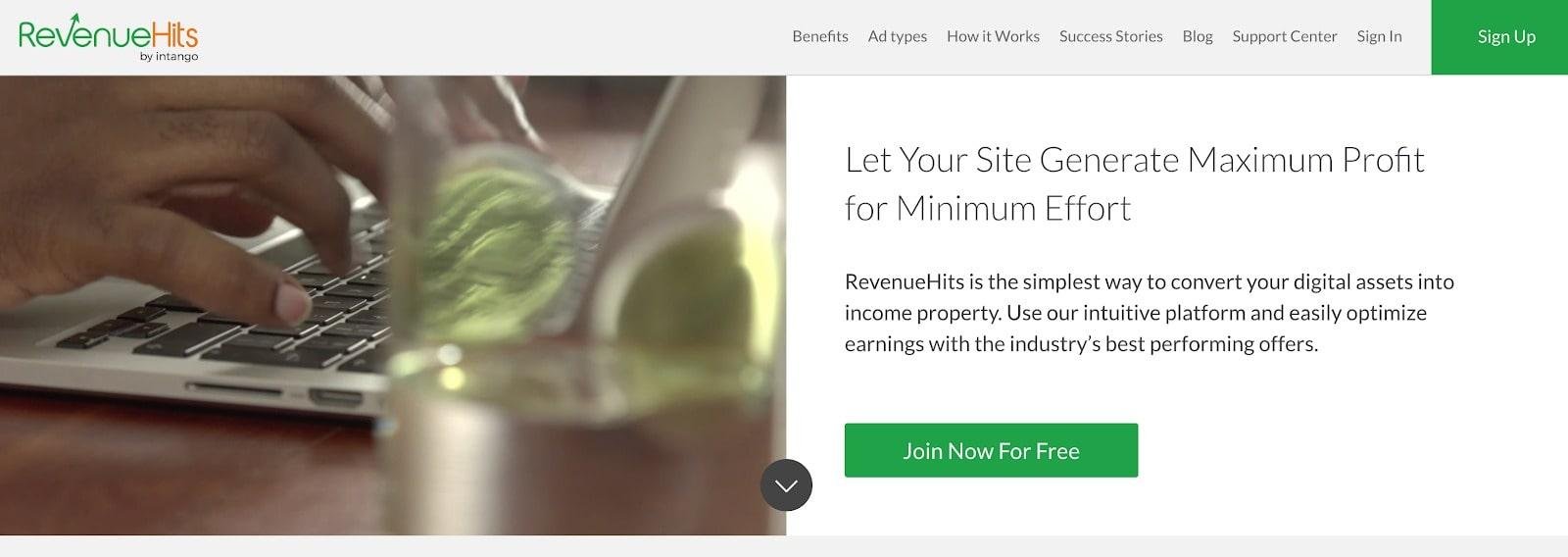
Unlike traditional ad networks that rely on clicks, RevenueHits focuses on conversions, meaning you earn when your audience takes specific actions, such as signing up for a service or completing a purchase. This makes it an appealing choice if your blog has engaged visitors.
One of the best aspects of RevenueHits is its accessibility. There’s no minimum traffic requirement, making it ideal for bloggers at any stage.
However, your blog must have original, high-quality content and a clear, professional layout to get approved. RevenueHits also works well with non-English blogs, giving it a broader reach compared to some competitors.
Over to you: blog advertising
Blog advertising can be a rewarding venture that not only enhances your income but also enriches the experience for your audience.
But depending on your preferences and niche, you may want to experiment with different monetization models to see what works best for you.
By choosing the right partnerships and staying true to your brand, you can create a sustainable model that benefits both you and your readers.
Did I miss anything? Do you have any questions or comments? Share your thoughts below in the comments section.
